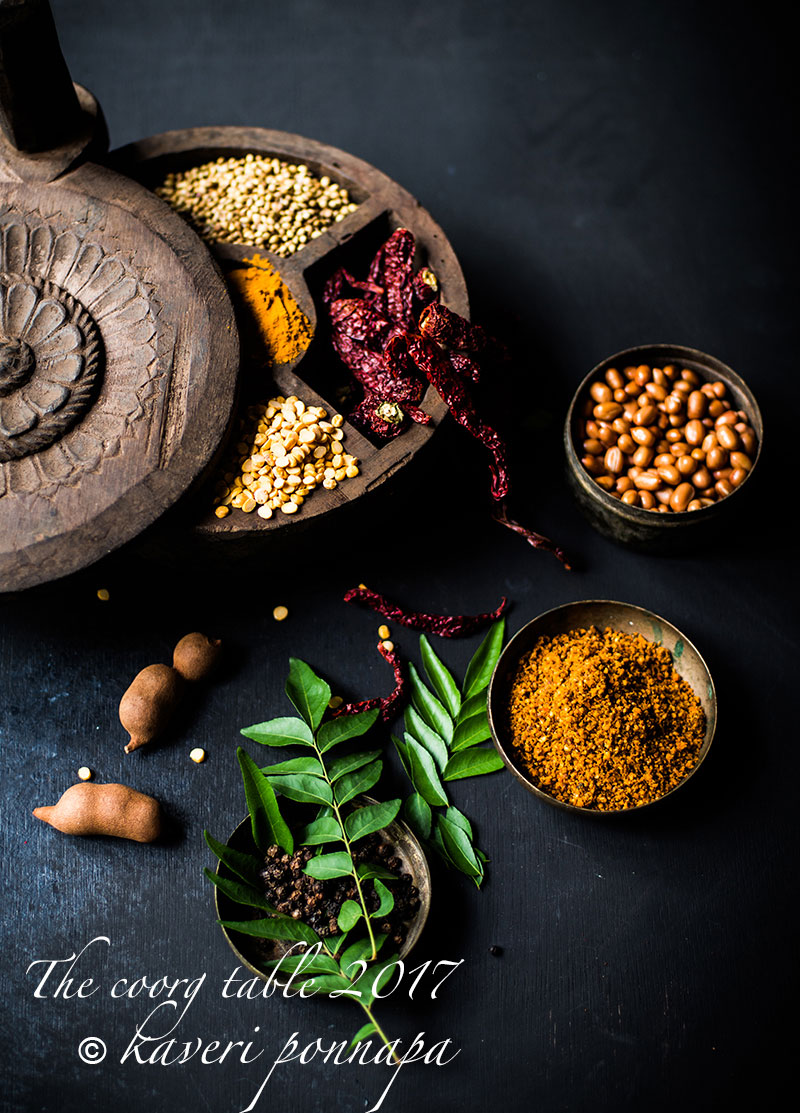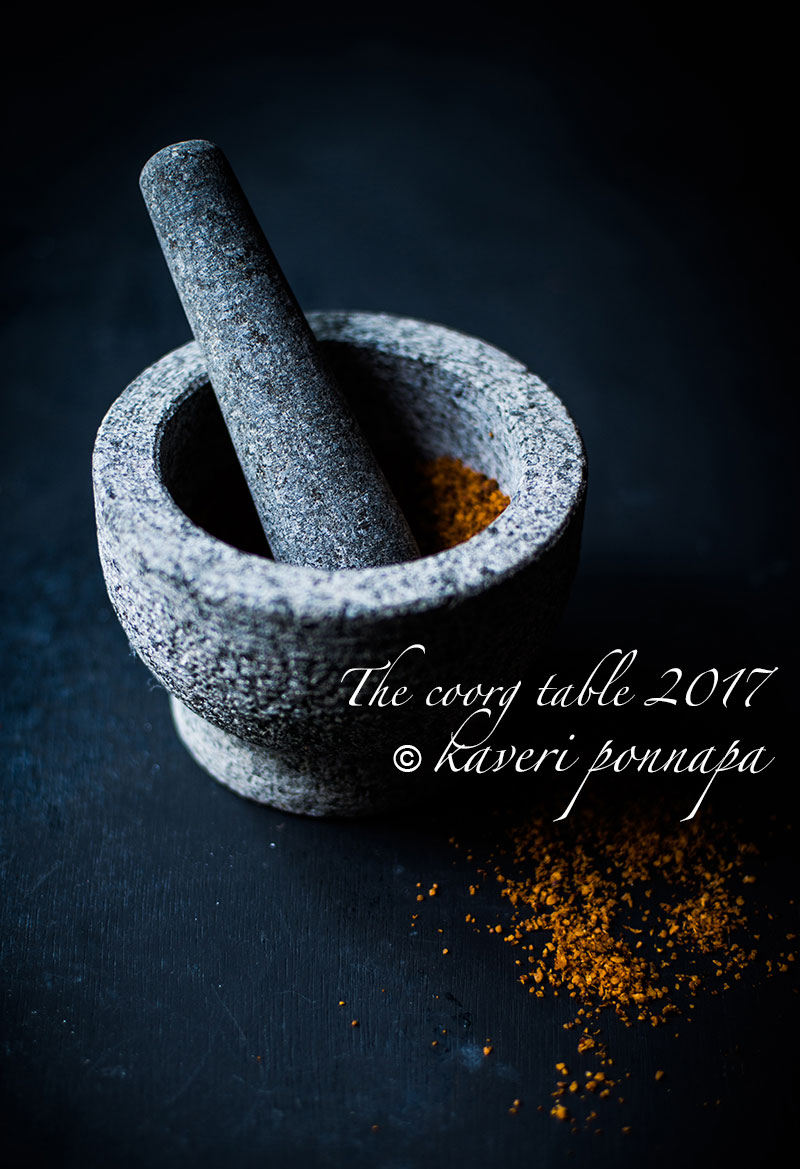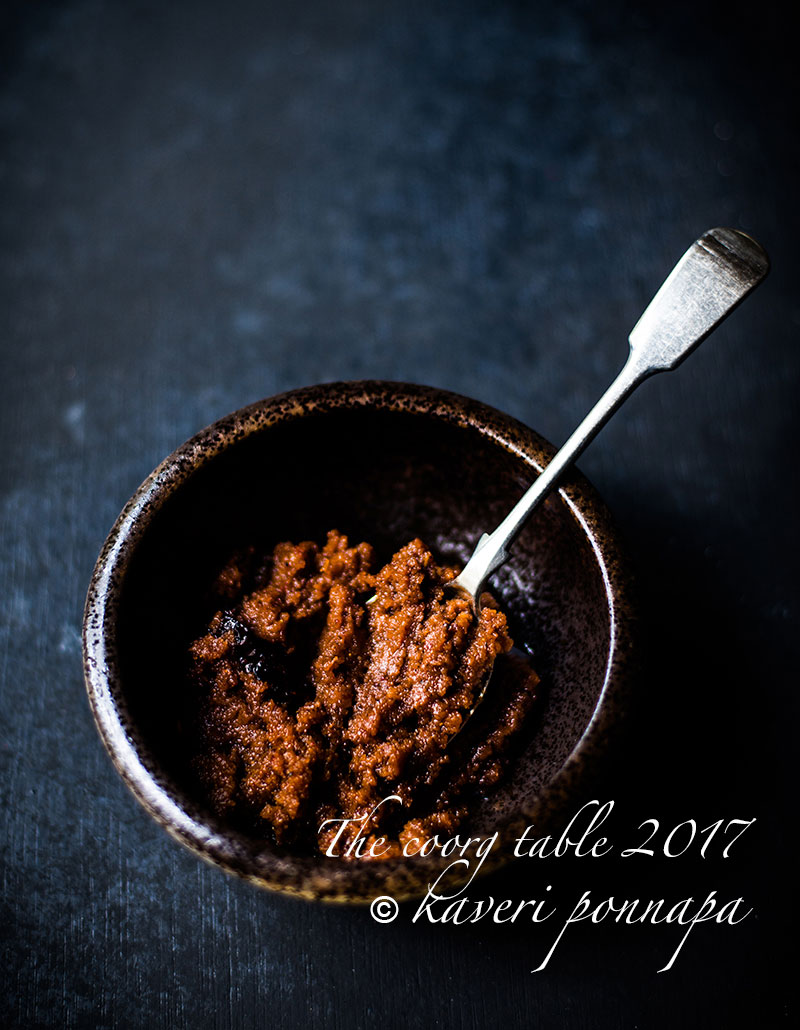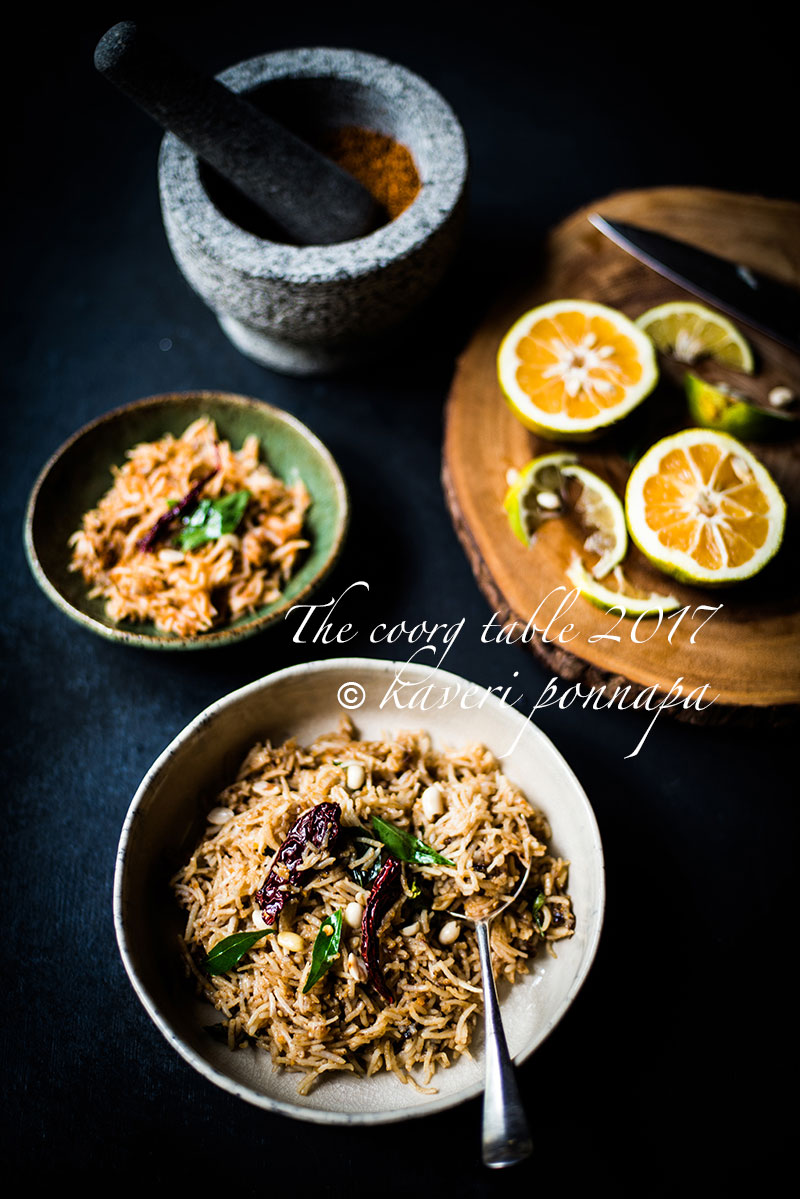Waves of taste and scent rise and fall in a single helping of pulikool. It might seem that the entire contents of an average spice-box are around you, and that’s not far from the truth. Before you can begin to try and decipher the spice notes, you are distracted by textures – soft, smooth, silky and defiantly crunchy. The cool, sour-sweetness of tamarind spreads in your mouth, blending with the clean, sharp, unmistakable citrus freshness of kaipuli, Citrus aurantium, Coorg’s beloved marmalade orange.
Pulikool is one of those deceptively simple dishes set aside for days of travel, or when your kitchen inspiration is depleted by pressing chores, or just a jaded palate that clamours for something to excite it, bring it to life again. There are a couple of versions of this spiced rice, versions familiar to me, which I love. Both of them use not limes, but the distinctive citrus flavours of the Coorg kaipuli.. You begin by roasting and blending a small mountain of whole spices into a symphony of textures, fragrances and tastes. Citrusy coriander seeds, warm cumin, chilies, dried to a silky, shiny red, a blend of pulses and much more come together in tones of burnt sienna and pleasingly rough textures. This seductively fragrant powder can be stored away, and when you are ready for some pulikool, a short session with tamarind paste, jaggery and yet more seasonings will give you a dark paste, slick with flavoured oil. Working it into hot –or cold –rice with your fingers, never a spoon, always your fingers, squeezing on generous quantities of fresh kaipuli juice, you can barely stop yourself from licking them. A few toasted and fried peanuts, curry leaves, mustard seeds and dried red chilies later, you are ready to eat.
You begin by roasting and blending a small mountain of whole spices into a symphony of textures, fragrances and tastes. Citrusy coriander seeds, warm cumin, chilies, dried to a silky, shiny red, a blend of pulses and much more come together in tones of burnt sienna and pleasingly rough textures. This seductively fragrant powder can be stored away, and when you are ready for some pulikool, a short session with tamarind paste, jaggery and yet more seasonings will give you a dark paste, slick with flavoured oil. Working it into hot –or cold –rice with your fingers, never a spoon, always your fingers, squeezing on generous quantities of fresh kaipuli juice, you can barely stop yourself from licking them. A few toasted and fried peanuts, curry leaves, mustard seeds and dried red chilies later, you are ready to eat.  The flavours are dense, layered, yet somehow, they never crowd each other out. You may think that you are eating nothing more special than a kind of seasoned rice, but it feels like several dishes rolled into one as each spice asserts itself. What you have is in fact a little feast on your plate, complete in itself, not in need of any other accompaniments..
The flavours are dense, layered, yet somehow, they never crowd each other out. You may think that you are eating nothing more special than a kind of seasoned rice, but it feels like several dishes rolled into one as each spice asserts itself. What you have is in fact a little feast on your plate, complete in itself, not in need of any other accompaniments.. There is another way to meld these spices together, roasting, crushing, grinding and boiling until they yield up all their secrets. It is the use of kaipuli juice, again, that works an alchemy, transforming a mass of pulverized spices, pulses and seeds into a thick, deep, umber coloured paste that tastes sour, sweet, spicy and salty all at once. Pulikool paka, the prosaic name for this thick, deep mass in which spices swirl and spin, oil rises, and sweet, spice and sour playfully battle each other is one of those condiments that can be enjoyed with rice, eaten with rotis, or as a relish at a meal. But its uniqueness lies in the essence of kaipuli, without which pulikool would be much the same as any of the similar flavoured and seasoned rice dishes that are better known.
There is another way to meld these spices together, roasting, crushing, grinding and boiling until they yield up all their secrets. It is the use of kaipuli juice, again, that works an alchemy, transforming a mass of pulverized spices, pulses and seeds into a thick, deep, umber coloured paste that tastes sour, sweet, spicy and salty all at once. Pulikool paka, the prosaic name for this thick, deep mass in which spices swirl and spin, oil rises, and sweet, spice and sour playfully battle each other is one of those condiments that can be enjoyed with rice, eaten with rotis, or as a relish at a meal. But its uniqueness lies in the essence of kaipuli, without which pulikool would be much the same as any of the similar flavoured and seasoned rice dishes that are better known. 
Photo Credits: Nithin Sagi
All Food Styling: Kaveri Ponnapa
Please look out for the recipe in my upcoming cookbook
Thank you for visiting this page. If you read something that you enjoy, or see an image that you like, please take a moment to write a response. Do look out for the recipes of all the food featured here in my upcoming cookbook.





I think somewhere long back I had pulikool, but exactly don’t remember when? But it was too good and I liked it. Feeling to eat now again after reading your blog. So nice to see all these recipe’s back. Thanks so much for posting all these receipe’s….
Hi Kaverappa, Pulikool is one of those dishes that you remember for the beautiful mix of flavours and textures, and of course, the unmistakable taste of kaipuli. I hope you get to have some soon, although kaipulis are in short supply at the moment due to the low rainfall this season. Let’s hope we get enough of them in the next few months to make several batches of pulikool. I’m going to inbox you about this dish. Warm wishes. Kaveri